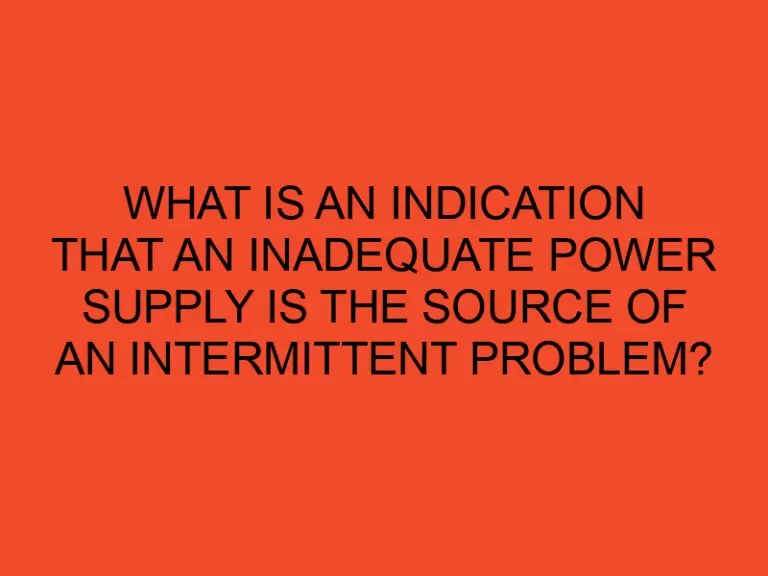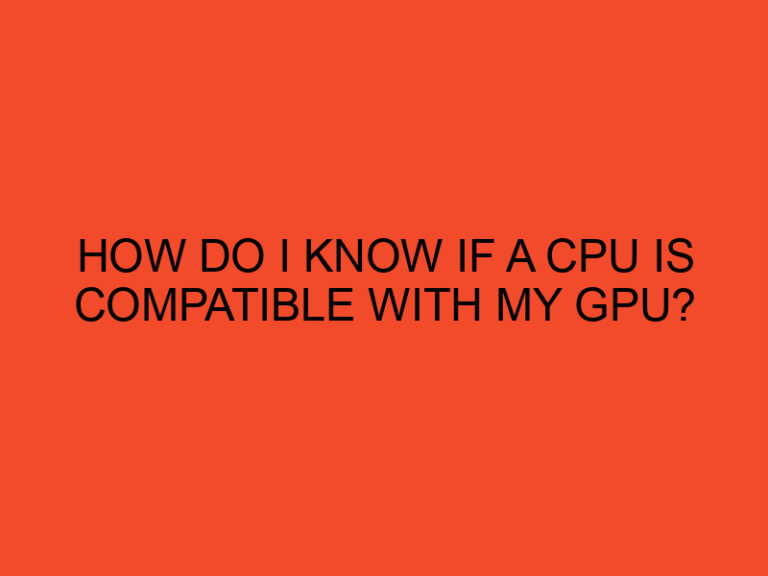In today’s world of technology, CPUs have become an essential part of almost all electronic devices, from computers to smartphones, gaming consoles, and more.
CPUs play a vital role in the functioning of these devices, and it’s essential to understand how much power they consume.
In this article, we will explore the power consumption of CPUs and how it affects the overall performance of electronic devices.
How many watts does a CPU use?
CPUs are one of the most important components of a computer system.
They are responsible for executing instructions and performing calculations that make everything from web browsing to gaming possible.
The power consumption of a CPU is directly related to its performance, and knowing how much power a CPU uses can help you choose the right components for your computer system.
What is Wattage?
Before we dive into the topic of CPU power consumption, let’s briefly discuss what wattage means.
Wattage is a measure of power, and it indicates how much energy a device consumes per second.
For example, a 100-watt light bulb consumes 100 watts of power per second.
In the case of CPUs, wattage refers to the amount of power that the CPU consumes during operation.
CPU Power Consumption
The power consumption of a CPU is a critical factor to consider when building or upgrading a computer system.
It is essential to choose a CPU with a power consumption that is compatible with your computer’s power supply and cooling system.
The power consumption of a CPU is measured in watts and can vary depending on several factors, including the CPU’s clock speed, the number of cores, the manufacturing process, and the workload.
Factors Affecting CPU Power Consumption
Clock Speed
The clock speed of a CPU is the rate at which it can perform instructions.
A higher clock speed typically means that the CPU can perform more instructions per second, which can increase its power consumption.
Number of Cores
The number of cores in a CPU can also affect its power consumption.
CPUs with more cores can perform more tasks simultaneously, but they can also consume more power.
Manufacturing Process
The manufacturing process used to create a CPU can affect its power consumption.
CPUs manufactured using smaller transistors can consume less power than those manufactured using larger transistors.
Workload
The workload placed on a CPU can also affect its power consumption.
CPUs that are under heavy load, such as during gaming or video editing, can consume more power than those under lighter loads, such as web browsing or word processing.
CPU Power Consumption in Different Scenarios
Idle Power Consumption
When a CPU is idle, it is not performing any tasks, and its power consumption is minimal.
Most modern CPUs have power-saving features that can reduce their power consumption when they are idle.
Normal Usage Power Consumption
Under normal usage, such as web browsing or word processing, a CPU’s power consumption is moderate.
Most modern CPUs are designed to consume minimal power when performing basic tasks.
Heavy Workload Power Consumption
When a CPU is under a heavy workload, such as gaming or video editing, its power consumption can increase significantly.
CPUs designed for high-performance tasks, such as gaming or content creation, often consume more power than those designed for basic tasks.
How to Calculate CPU Power Consumption
Calculating the power consumption of a CPU can be challenging, as it can vary depending on several factors.
However, there are several tools available that can help you estimate the power consumption of your CPU.
You can use a power supply calculator, which can provide an estimate of the total power consumption of your computer system, including the CPU.
Conclusion
The power consumption of a CPU is a critical factor to consider when building or upgrading a computer system.
It is essential to choose a CPU with a power consumption that matches your computer’s power supply and cooling system to ensure optimal performance and prevent damage to your components.
The power consumption of a CPU is affected by several factors, including clock speed, number of cores, manufacturing process, and workload.
It is essential to understand these factors to choose the right CPU for your needs.
FAQs
How much power does a typical desktop CPU consume?
A typical desktop CPU consumes between 65 to 95 watts of power under normal usage.
Do CPUs with higher clock speeds consume more power?
Yes, CPUs with higher clock speeds typically consume more power than those with lower clock speeds.
Can a CPU’s power consumption affect its performance?
Yes, a CPU’s power consumption can affect its performance. CPUs that consume more power can typically perform more tasks simultaneously, but they can also generate more heat, which can affect their performance.
How can I reduce the power consumption of my CPU?
You can reduce the power consumption of your CPU by using power-saving features, such as Intel’s SpeedStep or AMD’s Cool’n’Quiet, or by choosing a CPU with a lower TDP (thermal design power).
Is it safe to exceed a CPU’s maximum power consumption?
No, it is not safe to exceed a CPU’s maximum power consumption. Doing so can cause damage to your CPU and other components in your computer system.






